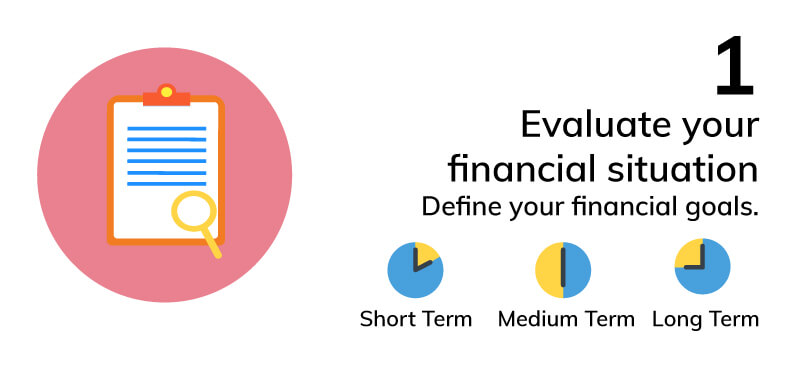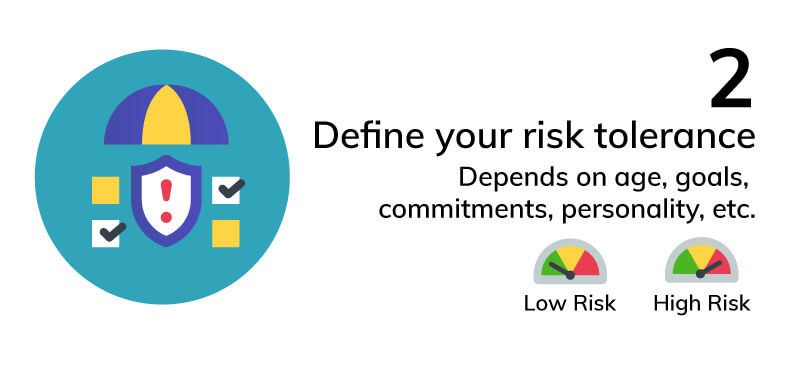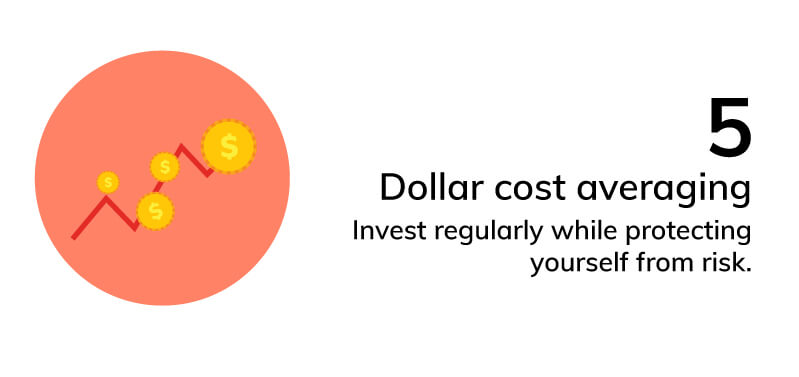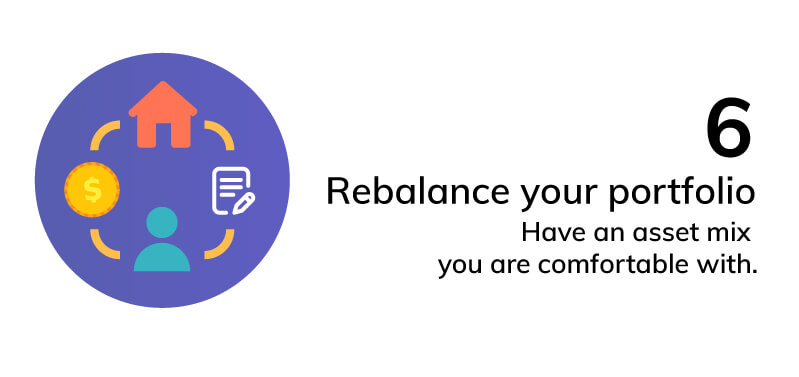Investment Advice for Beginners: 7 Things To Think About When Investing
In order to grow your wealth, investing is essential. But before you dive in, there are a couple of things you must do to ensure you are making good decisions and setting yourself up for financial success. Once you have started, there are also a few guidelines that will help you maximise your gains and avoid taking on too much risk.
As you explore how to start investing your money, here are seven key investment tips for beginners to remember.
Before you start investing
1. Evaluate your financial situation
If you’re seeking reliable investment tips for beginners, a foundational piece of advice is this: Investing is most effective when you have clear objectives. Before you commit to any investment decision, take the time to sit down and draft a financial roadmap. This roadmap not only provides clarity on your investment aspirations but also ensures that every financial move you make aligns with these objectives.
Begin by first assessing your financial health and pinpoint your investment goals. You may have several different goals in mind and they may vary in how soon you’re looking to achieve them.
A short-term goal might be to save up for a big-ticket purchase like a car or wedding, a medium-term goal could be to save up for your child’s education and a common long-term goal would be to be adequately prepared for a comfortable retirement. With your financial roadmap as a guide, you can better direct your investments towards the desired outcomes.
2. Define your risk tolerance
Another crucial tip for investing as a beginner is to decide your risk tolerance.
High risk investments usually offer the chance of achieving high returns, but also come with a higher risk of losing some or all of your money. Lower risk investments come with a lower chance of loss, but also usually offer lower returns.
Your risk tolerance will depend on many factors, such as your age, the amount of time before you wish to achieve your goal(s), your financial commitments, the amount of money you’re investing and your personality.
Never take on more risk than you are comfortable with. There are always low risk investment options for those who do not wish to take on high risk.
3. Set aside an emergency fund
Before you start to invest, make sure you first set aside enough money for an emergency fund – cash savings that enable you to stay afloat in emergency situations, such as sudden job loss, an accident or illness, or in case you need to incur an unexpected expense, such as if your fridge breaks down at home.
One of the best investment advice to take note of is to ensure you have saved 6 to 12 months of your monthly expenses, depending on your financial stability.
Especially for beginners, maintaining an emergency fund prevents you from having to liquidate your investments at an inopportune time or go into debt. You should therefore build up an emergency fund before you begin investing. If ever you do have to dip into your emergency fund, make it a priority to top it back up before continuing to invest.
While you’re investing
4. Diversify your investments
Often, while one type of investment asset may do very well, another type may do badly or only yield average returns. So resist the urge to over-commit to a single instrument that has done well for you in the past. The idiom “don’t put all your eggs in one basket” reflects one of the classic investment strategies: Diversification.
For those wondering how a beginner should start investing smartly, diversification of your portfolio is key. You can do this either by handpicking a diverse portfolio of assets, or investing in products that already contain a diverse range of assets, such as savings or investment plans managed by professionals.
If you invest too heavily in one thing such as a single company’s stock, your risks of losing everything or suffering great financial loss rise. Make sure you balance out your portfolio with some lower risk products that can cushion the blow of any losses.
Besides diversification, you might also be interested in exploring the "buy and hold" technique, a common approach in investing. Instead of frequently trading assets in response to market volatility, this method involves purchasing investments and holding onto them for extended periods, undeterred by short-term market movements. By grasping these classic investment strategies, beginners like yourself can start investing with greater confidence and insight.
5. Dollar cost averaging
Investing regularly and consistently can yield good results, especially for those who don’t have the time to constantly monitor the markets. The dollar cost averaging strategy enables you to invest regularly, while protecting yourself from risk.
How it works is that you invest a certain sum of money on a regular basis over a long period of time. For instance, you might choose to contribute a fixed amount of money to an investment plan every month over a period of 15 years.
Investing in this way can be less risky than making investments as and when the mood strikes. You do not run the risk of losing all your money by investing at an ill-chosen time, and the effects of fluctuations in the market are cushioned.
Furthermore, the strategy of dollar cost averaging, when combined with the power of compounding, becomes even more effective. Compounding is the process where the returns on your investments earn their own returns over time. When you invest consistently, not only do your initial investments grow, but the returns on those investments grow as well.
For example, if you invested $100 and earned a 10% return, you'd have $110. If you earned another 10% return the following year, you wouldn't just earn $10, but an additional $1 on the $10 earned from the first year, totaling $121. This effect magnifies over longer periods. This is why many investment tips for beginners emphasise starting early and reap the benefits of growing your money over a longer period of time, rather than having to wait for a good time to enter the market. The longer your money is invested, the more time it has to compound, turning small, regular investments into significant sums over the years. So, with dollar cost averaging and compounding, even those who start with modest means can accumulate substantial wealth over time.
Over time, the proportions of your wealth being held in each type of asset will shift. To keep to the same asset mix you’re comfortable with, it’s good to regularly rebalance your portfolio.
Rebalancing simply involves buying and/or selling off certain assets so that the distribution of your wealth fits with your financial plan. Often, you might be able to use the gains from selling overweighted assets, which tend to be highly-priced, to buy underweighted assets.
6. Rebalance your portfolio
Over time, the proportions of your wealth being held in each type of asset will shift. To keep to the same asset mix you’re comfortable with, it’s good to regularly rebalance your portfolio. Whether you’re a beginner or an experienced investor, this is one investment tip you should never overlook.
Rebalancing simply involves buying and/or selling off certain assets so that the distribution of your wealth fits with your financial plan. During this process, it's vital to have a dual focus: firstly on the strategic asset allocation and secondly on keeping costs low. Transaction costs, although they might seem minimal on individual trades, can accumulate over time and erode your potential returns.
For instance, while it might be tempting to cash in on certain overweighted assets, especially when they've significantly appreciated in value, it's equally important to consider the costs associated with such transactions. This includes not just the direct transaction fees but also potential tax implications or opportunity costs. Similarly, when buying underweighted assets, always scout for platforms offering competitive rates. By being vigilant about expenses during the rebalancing process, you enhance your potential for better net returns, ensuring that more of your money continues to work for you.
7. Beware of fraud
Investment scams are nothing new to Singaporeans, with many sophisticated techniques, such as the infamous gold buy-back scams. In fact, more than S$330 million has been lost to scammers in the first half of 2023, and the cases continue to rise (Source: CNA). The perpetrators leveraged a myriad of channels to snare their victims, from social media platforms to messaging apps.
With this in mind, be suspicious of any “investment” scheme that promises high returns at little to no risk. If it sounds too good to be true, it probably is. All investments carry some degree of risk, and legitimate ones promising high returns are typically accompanied by high risks.
As extra investment advice for beginners, other red flags to look out for include pressure tactics designed to cause victims to sign up for fear of losing out, such as the claim that the scheme is only open for a limited time or that special rates will be offered for early sign-ups. Also, be wary of any glowing testimonials or a stellar track record, as these can be easily fabricated.
If you are offered a commission for referring people to an “investment” scheme, beware, as this usually does not happen with legitimate investments and could be a sign of a ponzi scheme.
On the bright side, the Singapore Deposit Insurance Corporation protects owners of life insurance and general insurance from failure of the insurer, provided the insurer is licensed in Singapore by the Monetary Authority of Singapore. So you have much less to worry about when buying plans from such insurers.
Connect for more investment tips for beginners
Taking your first steps into investing need not be daunting. Among the best tips for investing for beginners is to consider investment-linked plans in Singapore, like Income’s WealthLink, Invest Flex, Invest Flex Vantage, or AstraLink. Or, if you don’t want to take this journey alone, you can always speak to an Income Insurance advisor for help. In addition to personalised investment advice, they’ll assist you in reviewing your financial goals and taking the right steps to grow your wealth.
Investments are subject to investment risks including the possible loss of the principal amount invested. Before committing to the minimum investment period, you may want to consider how long is your investment expectations or needs and whether you are able to keep up with the premium payment should your financial situation changed. Past performance, as well as the prediction, projection or forecast on the economy, securities markets or the economic trends of the markets are not necessarily indicative of the future or likely performance of the ILP sub-fund. The performance of the ILP sub-fund is not guaranteed and the value of the units in the ILP sub-fund and the income accruing to the units, if any, may fall or rise. A product summary and product highlights sheet(s) relating to the ILP sub-fund are available and can be obtained from your insurance advisor or online at www.income.com.sg/funds. A potential investor should read the product summary and product highlights sheet(s) before deciding whether to subscribe for units in the ILP sub-fund.
This article is meant purely for informational purposes and does not constitute an offer, recommendation, solicitation or advise to buy or sell any product(s). It should not be relied upon as financial advice. The precise terms, conditions and exclusions of any Income Insurance products mentioned are specified in their respective policy contracts. Please seek independent financial advice before making any decision.
These policies are protected under the Policy Owners’ Protection Scheme which is administered by the Singapore Deposit Insurance Corporation (SDIC). Coverage for your policy is automatic and no further action is required from you. For more information on the types of benefits that are covered under the scheme as well as the limits of coverage, where applicable, please contact Income Insurance or visit the GIA/LIA or SDIC websites (www.gia.org.sg or www.lia.org.sg or www.sdic.org.sg).
This advertisement has not been reviewed by the Monetary Authority of Singapore.














